Recent Posts
Strong, Musty Odor Leads to Discovery of a Hidden Mold Outbreak in Kissimmee Home?
4/9/2024 (Permalink)
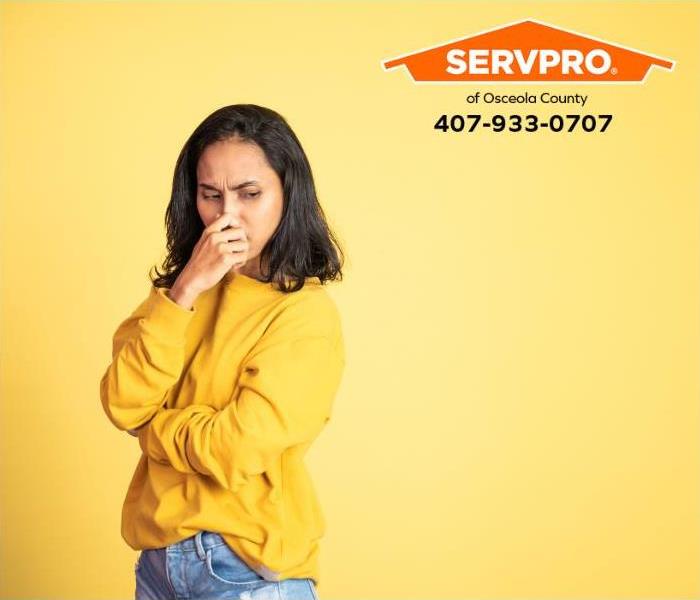 We respond to mold damage emergencies 24 hours a day in Osceola County.
We respond to mold damage emergencies 24 hours a day in Osceola County.
Our local Osceola County team is a trusted leader in mold mitigation and remediation services. Kissimmee residents and businesses rely on us to restore mold outbreaks quickly and efficiently. Sometimes mold damage is not readily apparent. Here are some symptoms of hidden mold damage:
Musty Odor: A persistent, earthy smell in some home regions, especially in enclosed spaces like basements, attics, or behind walls, may indicate mold growth.
Water Stains: Discoloration on walls, ceilings, or floors could indicate water infiltration, often leading to mold growth.
Peeling Paint or Wallpaper: Moisture buildup behind walls can cause paint or wallpaper to bubble, crack, or peel, indicating potential mold growth underneath.
Visible Mold: While not always hidden, mold growth may occur in less noticeable areas like behind furniture, inside cabinets, or beneath carpets.
Deterioration of Materials: Mold can cause materials like wood, drywall, or fabric to deteriorate over time, leading to structural damage or weakening.
Identifying and promptly addressing these symptoms is crucial to prevent further damage. Regular inspection and maintenance can help mitigate hidden mold issues.
Call Us Today!
When your home or business in Kissimmee has mold damage, our local Osceola County team will restore the damage “Like it never even happened.” Call us today at 407-933-0707.
SERVPRO® franchises are independently owned and operated.
Holopaw Homeowner Prevents Water Intrusion During a Rainstorm?
4/2/2024 (Permalink)
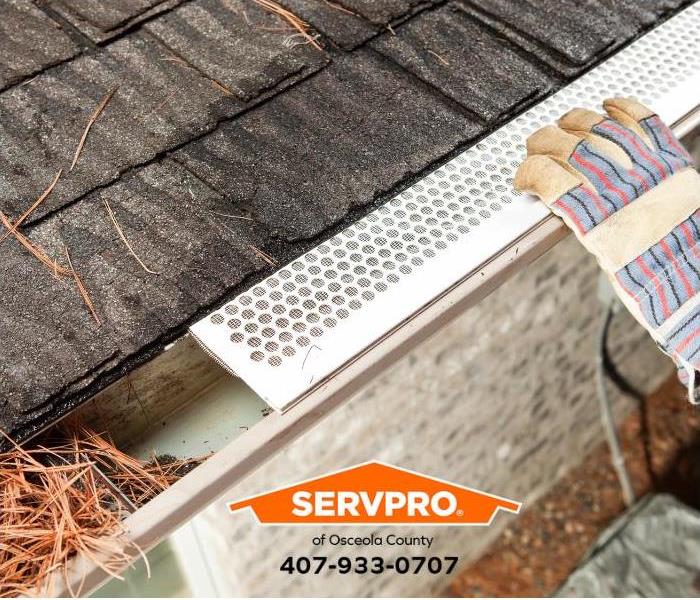 We respond to storm damage emergencies 24 hours a day in Osceola County.
We respond to storm damage emergencies 24 hours a day in Osceola County.
Our local Osceola County team restores storm damage in Holopaw every year. Residents can take preventative measures to prevent water intrusion during heavy rain events by:
Maintain gutters and downspouts: Regularly clean gutters and downspouts to ensure proper drainage. Clear any debris that could obstruct water flow and redirect water away from the foundation.
Install gutter guards: Consider installing gutter guards to prevent debris buildup and facilitate proper water flow.
Check and repair roof: Inspect the roof for missing or damaged shingles, cracks, or leaks. Repair any issues promptly to prevent water infiltration.
Seal windows and doors: Check for gaps or cracks around windows and doors and seal them with weatherstripping or caulking to prevent water seepage.
Grade the landscape: Ensure the ground slopes away from the foundation to prevent water from pooling near the house. Fill in low spots and install French drains or other drainage solutions if necessary.
Maintain landscaping: Trim trees and shrubs near the house to prevent branches from damaging the roof during storms. Consider using mulch and plants with deep root systems to absorb excess water.
Monitor indoor humidity: Use a dehumidifier to maintain indoor humidity levels between 30-60% to prevent condensation and moisture buildup.
Call Us Today!
When your home or commercial business in Holopaw has damage from heavy rain, our local Osceola County team will restore the damage “Like it never even happened.” Call us today at 407-933-0707.
SERVPRO® franchises are independently owned and operated.
Biohazard Spill in Lake Marian Highlands Business?
3/26/2024 (Permalink)
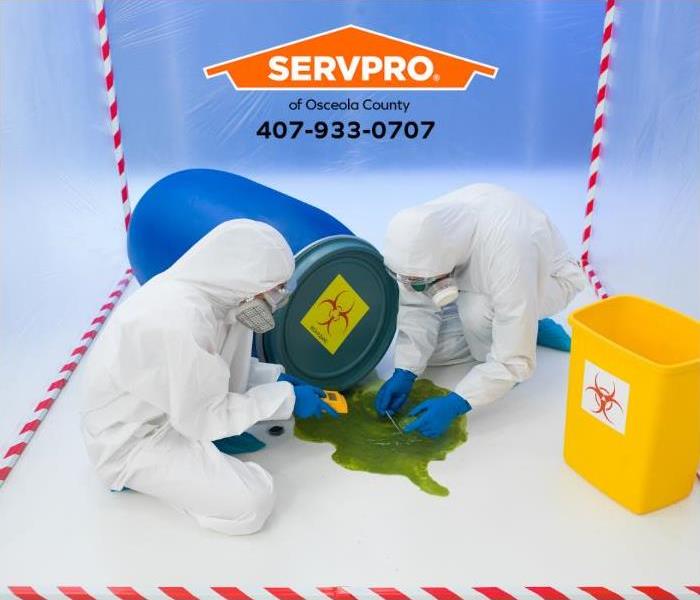 We provide biohazard cleanup services in Osceola County.
We provide biohazard cleanup services in Osceola County.
Do you know that our local Osceola County team cleans and decontaminates biohazards and chemical spills in Lake Marian Highlands? Biohazard exposure can be dangerous and life-threatening, and biohazard spills require professional decontamination services. Our technicians have the training, equipment, and experience to safely clean areas contaminated by biohazards and other chemicals, including the following:
- Sewage backups
- Crime scene residues
- Suicide/death accidents
- Homicide cleanups
- Blood cleanup
- Accident cleanup
- Hoarding scenes
- Animal waste/remains
- Chemical spills
- Tear gas cleanup
Here are some safety tips for things that can and should not be done while waiting for professional help to arrive:
What to Do After a Contamination
- Stay out of affected areas
- Call emergency service personnel if the situation is life-threatening
- Treat allbodily fluids as if they are contaminated
- Turn off the heating, ventilation, and air conditioning system (HVAC) system if there is sewage damage
What Not to Do After a Contamination
- Don’t leave wet fabrics in place
- Don’t leave books, magazines, or other colored items on wet carpets or floors
- Don’t use your vacuum to remove water
- Don’t use television or other electrical appliances
- Don’t turn on ceiling fixtures if the ceiling is wet, and keep out of rooms where ceilings are sagging
Call Us Today!
When your commercial business or home in Lake Marian Highlands has a biohazard emergency, our local Osceola County team will restore the damage “Like it never even happened.” Call us today at 407-933-0707.
SERVPRO® franchises are independently owned and operated.
Poinciana Kitchen Flooded by Broken Refrigerator Water Supply Line Overnight?
3/19/2024 (Permalink)
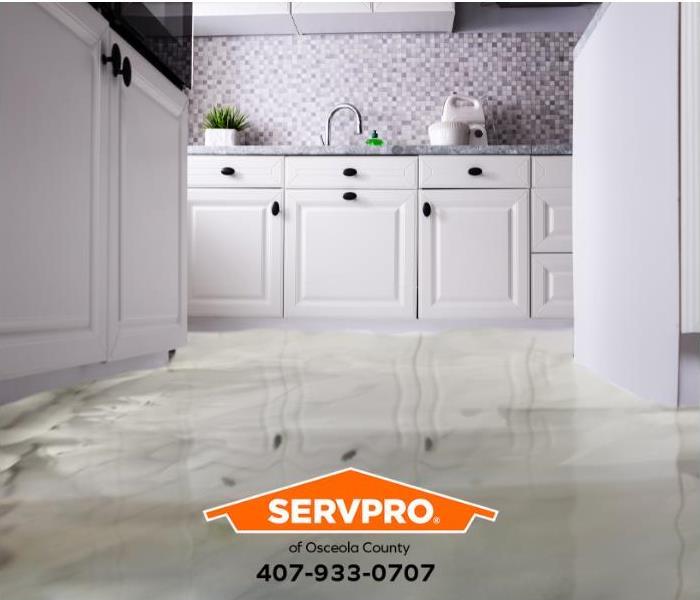 We restore water damage 24 hours a day in Osceola County.
We restore water damage 24 hours a day in Osceola County.
Our local Osceola County team has been restoring water damage in Poinciana for many years. Water supply lines to kitchen appliances are a leading cause of water damage in homes in the United States. A broken water supply line for a refrigerator can lead to a significant overnight kitchen flood due to the continuous flow of pressurized water. This supply line connects the refrigerator's water and ice dispenser to the household water source. When it breaks, water escapes freely until the issue is addressed. Overnight, the kitchen can flood for several reasons:
Water Pressure: The water supply line is usually pressurized, which means that when it breaks, a substantial volume of water can flow out quickly, leading to rapid flooding.
Unattended Appliance: Refrigerators are often left unattended overnight, allowing water to flow unchecked.
Hidden Location: The supply line is often hidden behind or beneath the refrigerator, making it difficult to notice the break immediately.
Absorbent Materials: Many kitchens have absorbent materials like flooring, drywall, or cabinets, which can quickly absorb and spread water, worsening the damage.
Continuous Leak: The refrigerator's ice maker or water dispenser may keep trying to fill, exacerbating the leak until the water supply is manually shut off.
Call Us Today!
When your home or commercial business in Poinciana has a water damage emergency, our local Osceola County team will restore the damage “Like it never even happened.” Call us today at 407-933-0707.
SERVPRO® franchises are independently owned and operated.
Comprehensive Mold Remediation Process Removes Mold Outbreak in Reunion Home?
3/12/2024 (Permalink)
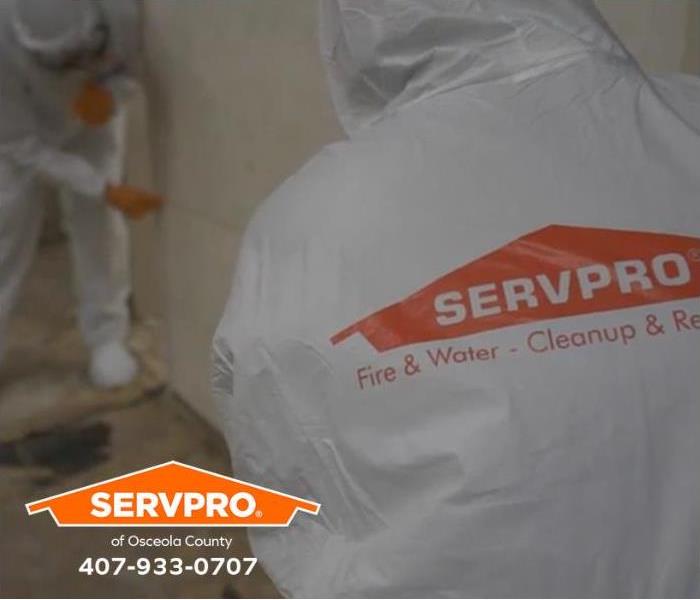 We are leaders in mold remediation services in Osceola County.
We are leaders in mold remediation services in Osceola County.
Our local Osceola County team is a top choice for mold remediation services in Reunion. We follow a seven-step process for removing mold outbreaks in homes and commercial properties.
- Emergency Contact
We’ll ask you questions to determine the necessary equipment and resources.
- Inspection and Mold Damage Assessment
We follow local and state laws regarding inspection and documentation based on your unique situation.
- Mold Containment
We may use advanced containment procedures like negative air chambers to isolate the contaminated area with physical barriers and negative air pressure to keep the mold spores from spreading during the cleanup process.
- Air Filtration
We utilize powerful “air scrubbers” and HEPA vacuums to prevent the spread of these mold spores while mold remediation is in process.
- Removing Mold and Mold-Infested Materials
We use antifungal and antimicrobial treatments to eliminate mold colonies and to help prevent new colonies from forming.
- Cleaning Contents
We clean your furniture, decorative items, curtains, and other restorable items affected by mold. We’re also trained to remove odors and deodorization using fogging equipment.
- Restoration
Restoration may involve minor repairs or it may involve the reconstruction of various areas or rooms in a home or business.
Call Us Today!
When your home or commercial business in Reunion has mold damage, our local Osceola County team will restore the damage “Like it never even happened.” Call us today at 407-933-0707.
SERVPRO® franchises are independently owned and operated.
Exploding Microwave Cause of Fire Damage in Celebration Home?
3/5/2024 (Permalink)
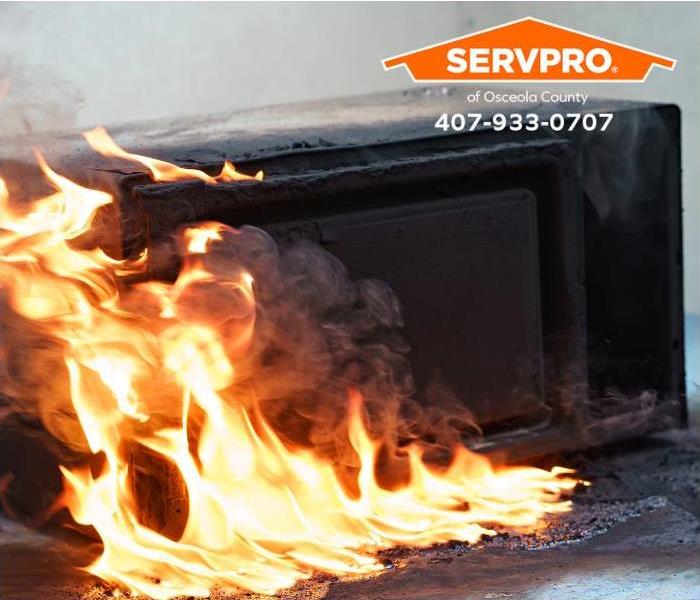 We are leaders in fire damage restoration services in Osceola County.
We are leaders in fire damage restoration services in Osceola County.
Our local Osceola County team responds to fire damage emergencies 24 hours a day in Celebration. Microwave ovens make it easy to warm up or defrost a meal, but they can cause burns and fires. Here are some microwave safety tips from the National Fire Protection Association:
- PURCHASE a microwave oven that is listed by a qualified testing laboratory. Make sure to complete and return the product registration card. This way, the manufacturer can reach you if there is a recall of the product.
- PLUG the microwave oven directly into the wall outlet — never use an extension cord.
- MAKE sure the microwave oven is at a safe height, within easy reach of all users.
- OPEN food slowly, away from the face. Hot steam or the food itself can cause burns.
- FOOD heats unevenly in microwave ovens. Stir and test before eating or giving to children.
- NEVER heat a baby bottle in the microwave. Since a microwave oven heats unevenly, it can create hot pockets, leading to burns. Warm a bottle in a bowl of warm, not hot or boiling, water, or by running it under the tap.
Call Us Today!
When your home or commercial business in Celebration has fire damage, our local Osceola County team will restore the damage “Like it never even happened.” Call us today at 407-933-0707.
SERVPRO® franchises are independently owned and operated.
Rare February Storm Hits St. Cloud?
2/27/2024 (Permalink)
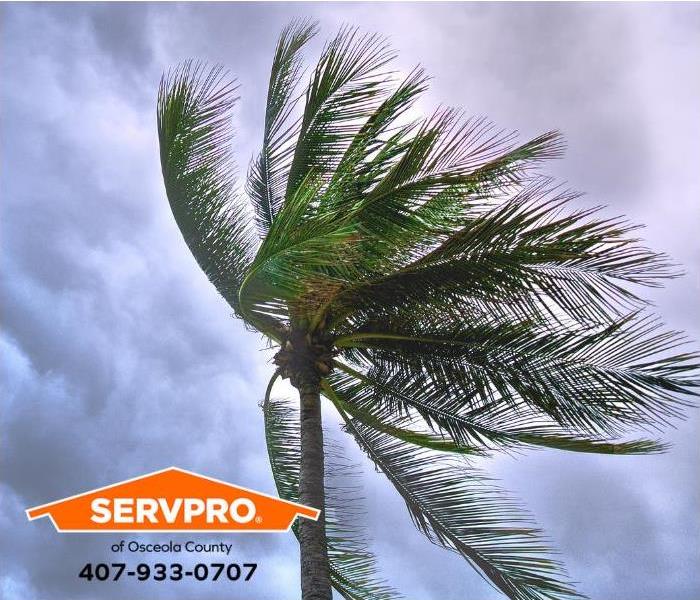 We restore storm damage 24 hours a day in Osceola County.
We restore storm damage 24 hours a day in Osceola County.
Our local Osceola County team is a trusted leader in storm damage restoration services. Although St. Cloud enjoys a relatively mild and pleasant climate during February, it can still be subject to a variety of weather conditions, including occasional storms. Here are some examples of the types of storms that can occur in February in Osceola County:
Thunderstorms: While severe thunderstorms are less common in February, the area can still experience occasional thunderstorms with lightning, heavy rain, and gusty winds.
Rainstorms: Rainfall is possible throughout the year in Osceola County, and February is no exception. Rainstorms can occur, but they are generally not as intense or frequent as during the summer months.
Cold fronts: February can bring occasional cold fronts, which may result in cooler temperatures and brisk winds. These fronts can sometimes lead to brief periods of unsettled weather.
Tornadoes: Although tornadoes are very rare in February in Florida, they are not impossible. While the risk is relatively low, staying informed about weather conditions and preparing for any severe weather event is essential.
Hailstorms: Hailstorms are infrequent in February, but hail can occasionally accompany thunderstorms or severe weather events.
Call Us Today!
When your home or commercial business in St. Cloud has storm damage, our local Osceola County team will restore the damage “Like it never even happened.” Call us today at 407-933-0707.
SERVPRO® franchises are independently owned and operated.
How Can I Prevent Mold Outbreaks in My Kissimmee Home?
2/20/2024 (Permalink)
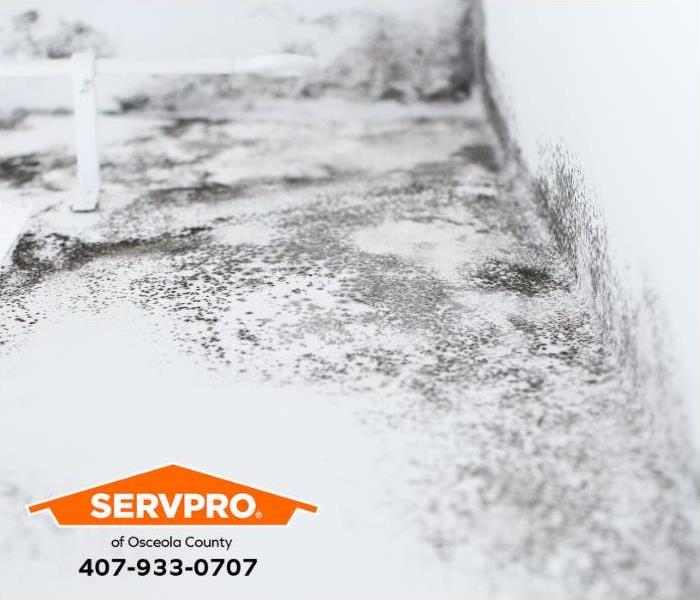 We are leaders in mold remediation services in Osceola County.
We are leaders in mold remediation services in Osceola County.
Our local Osceola County team is highly trained and certified to remediate mold damage in homes and commercial businesses in Kissimmee. Mold thrives in damp, humid environments, so the key to prevention is moisture control. Here are some effective ways to prevent mold growth in your home:
Monitor Humidity: Keep indoor humidity levels between 30 and 50 percent.
Proper Ventilation: Ensure good airflow by using exhaust fans. Additionally, use ventilation systems and open windows when weather permits to reduce humidity.
Address Leaks Promptly: Repair any leaks in roofs, plumbing, or foundations immediately to prevent water intrusion.
Use Mold-Resistant Products: Use mold-resistant drywall, paints, and insulation in areas prone to moisture, like bathrooms and basements.
Regular Cleaning: Routinely clean and maintain your home, including HVAC systems and air ducts, to prevent dust and debris buildup, which can promote mold growth.
Proper Insulation: Adequately insulate your home to prevent condensation on cold surfaces, which can lead to mold growth.
Gutters and Drainage: Keep gutters and downspouts clear of debris to ensure proper water drainage from your home's foundation.
Use Exhaust Fans: When cooking or showering, use exhaust fans to expel moisture-laden air outside rather than letting it accumulate indoors.
Call Us!
When your home or commercial business in Kissimmee has mold damage, our local Osceola County team will restore the damage “Like it never even happened.” Call us today at 407-933-0707.
SERVPRO® franchises are independently owned and operated.
Smoke Odor and Residue Cleaning Services in Holopaw?
2/13/2024 (Permalink)
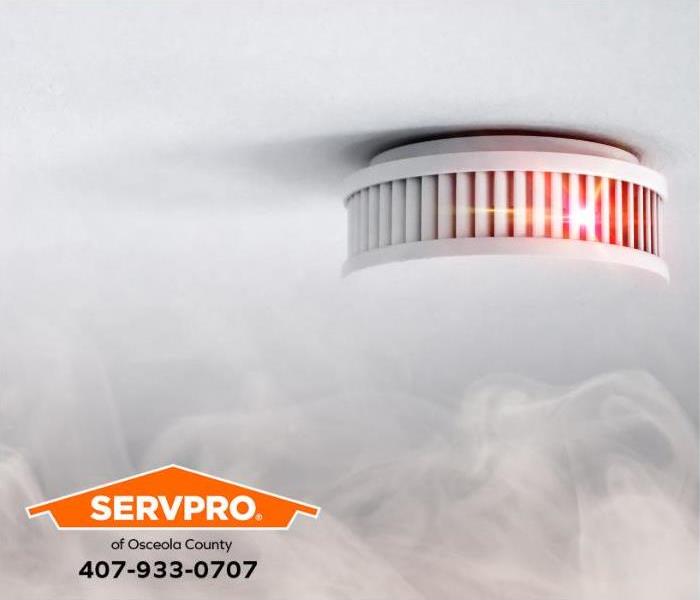 We restore smoke damage in Osceola County.
We restore smoke damage in Osceola County.
Our local Osceola County team is highly trained and certified to restore smoke damage in homes and businesses in Holopaw. Professional cleaning services are essential for removing smoke odor and residue from a fire-damaged property due to the complex and hazardous nature of the aftermath.
When a fire occurs, it releases a mixture of toxic chemicals and particles into the air, which can settle on surfaces throughout the property. These residues include soot, ash, and carcinogenic substances.
Our technicians have the specialized training and equipment to assess the damage's extent accurately. They can identify areas where smoke and residue have infiltrated, including hidden spaces, which are often missed by untrained individuals.
Additionally, smoke odor can be persistent and challenging to eliminate without professional help. We use advanced techniques like thermal fogging and ozone treatment to neutralize odors at their source. We never “mask” odors temporarily.
DIY attempts to clean fire-damaged properties can exacerbate the problem by spreading residue or causing structural damage. Professional services ensure a thorough, safe, and efficient cleanup process, minimizing the risk of secondary damage and health issues.
Call Us Today!
When your home or commercial business in Holopaw has smoke odor and residue damage, our local Osceola County team will restore the damage “Like it never even happened.” Call us today at 407-933-0707.
SERVPRO® franchises are independently owned and operated.
Space Heater Safety Tips for Lake Marian Highlands Residents?
2/6/2024 (Permalink)
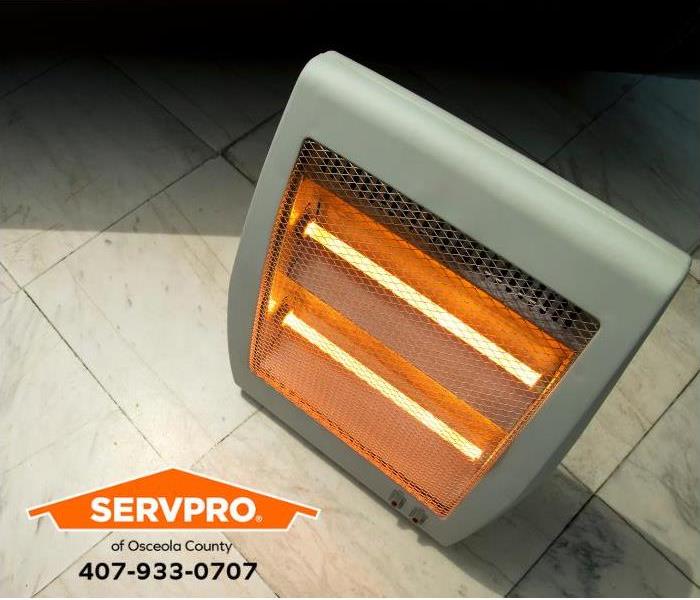 We respond to fire damage emergencies 24 hours a day in Osceola County.
We respond to fire damage emergencies 24 hours a day in Osceola County.
Our local team in Osceola County is a leader in fire damage restoration services in Lake Marian Highlands. According to the National Fire Protection Association (NFPA), space heaters were responsible for the highest proportion of losses in home heating equipment fires. During the cool winter nights, space heaters are used to warm rooms, but they can also be a fire hazard. Here are some tips from the NFPA for operating space heaters safely:
Heater Checklist
- Purchase a heater with the seal of a qualified
testing laboratory.
- Keep the heater at least 3 feet away.
from anything that can burn, including people.
- Choose a heater with a thermostat and overheat
Protection.
- Place the heater on a solid, flat surface.
- Make sure your heater has an auto shut-off to turn
the heater off if it tips over.
- Keep space heaters out of the way of foot traffic.
Never block an exit.
- Keep children away from the space heater.
- Plug the heater directly into the wall outlet.
Never use an extension cord.
- Space heaters should be turned off and
unplugged when you leave the room or go to bed
Call Us Today!
When your home or commercial business in Lake Marian Highlands needs fire damage restoration services, our local Osceola County team will restore your fire damage “Like it never even happened.” Call us today at 407-933-0707.
SERVPRO® franchises are independently owned and operated.

 24/7 Emergency Service
24/7 Emergency Service









